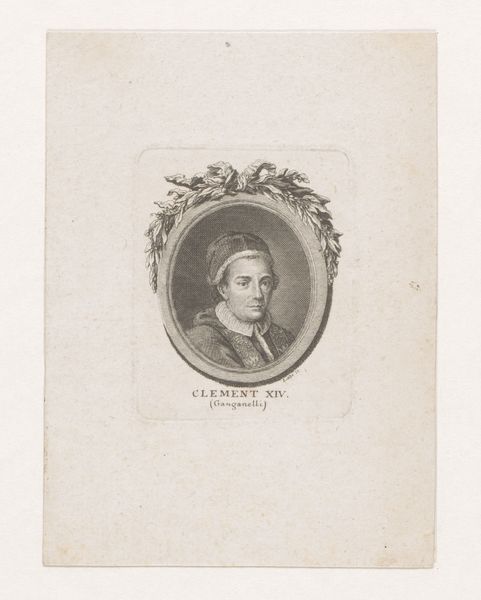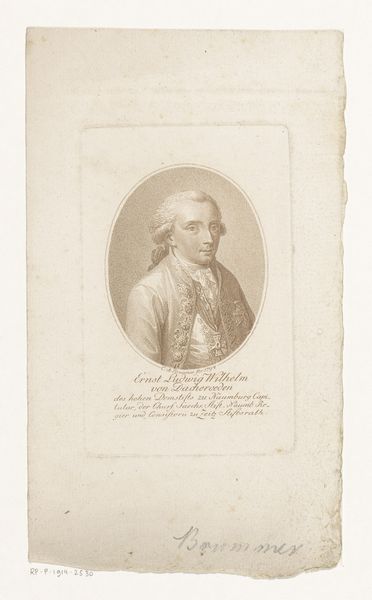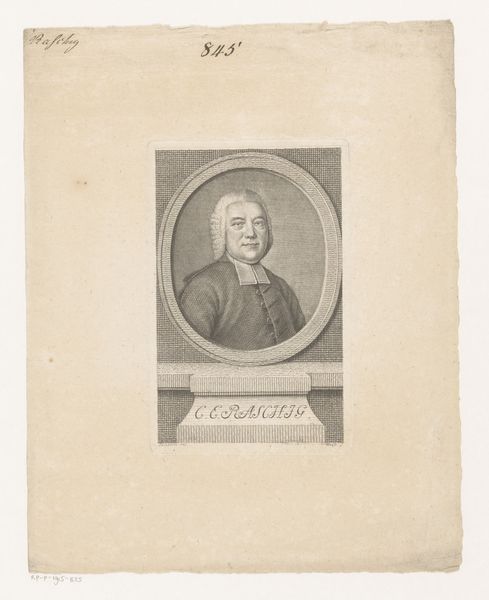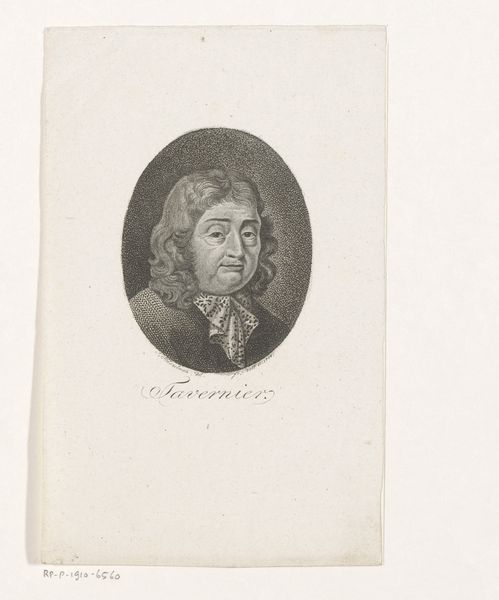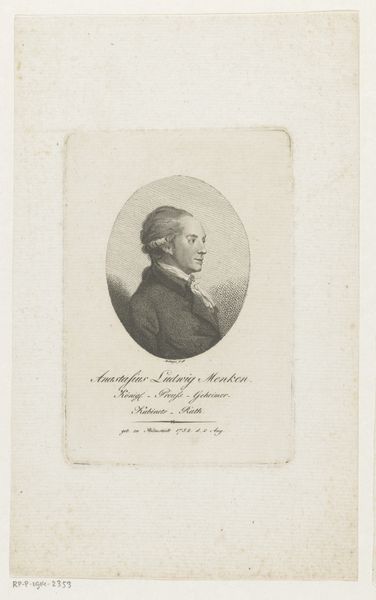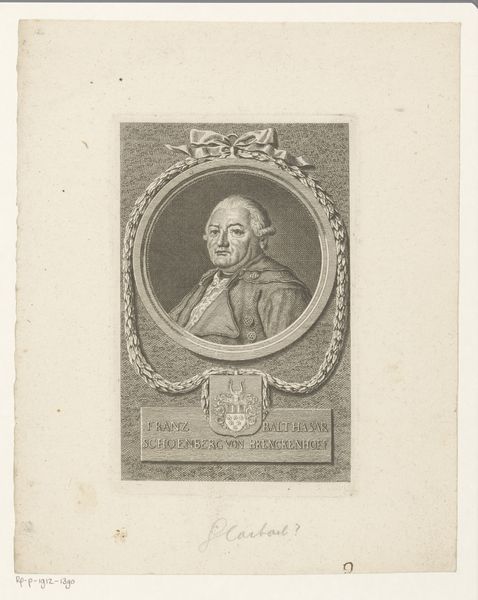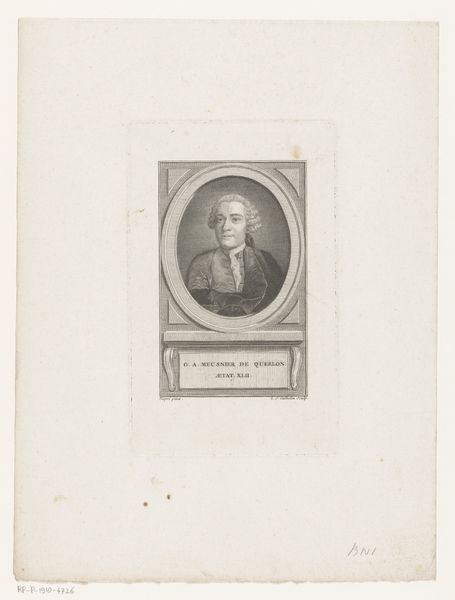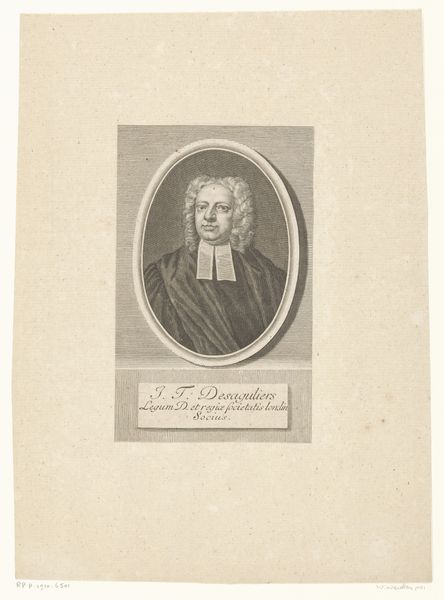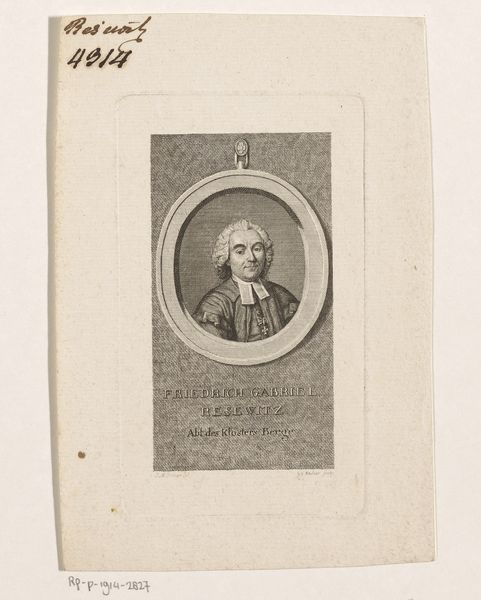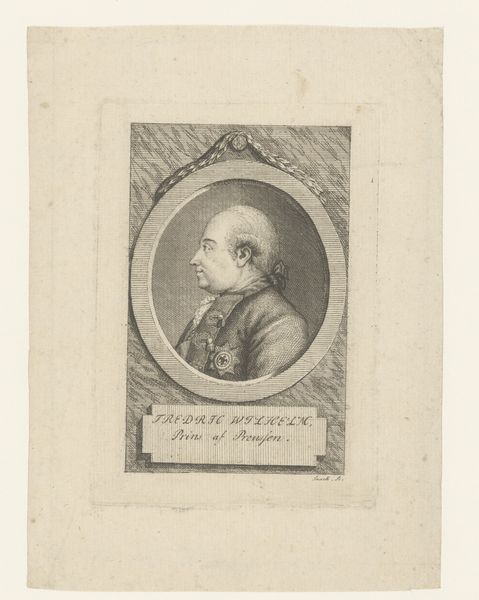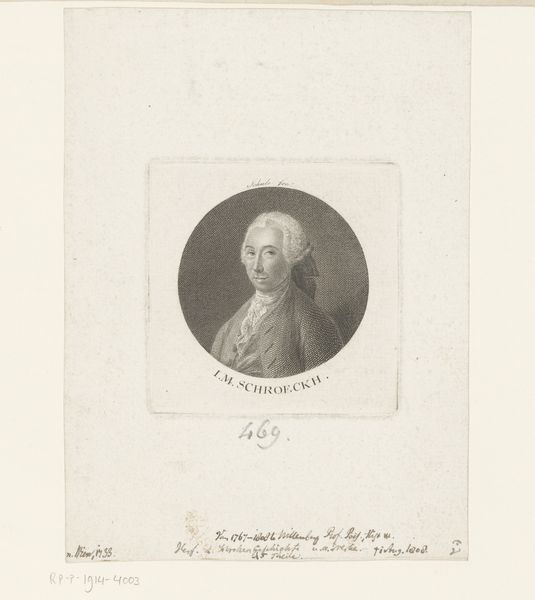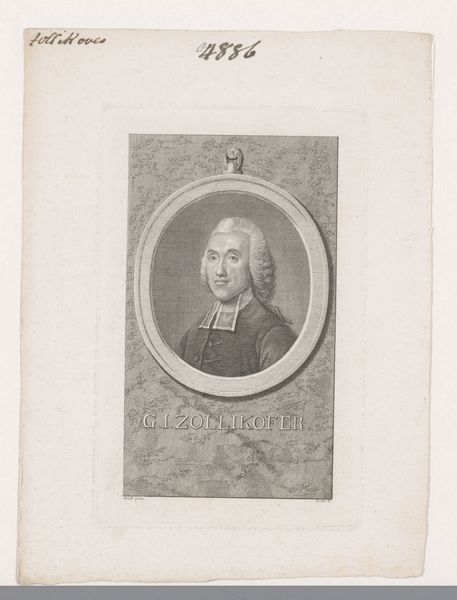
print, engraving
#
portrait
#
neoclacissism
# print
#
old engraving style
#
history-painting
#
academic-art
#
engraving
Dimensions: height 113 mm, width 84 mm
Copyright: Rijks Museum: Open Domain
Curator: Looking at this print, I'm struck by the way light is used. The face is softly illuminated within the stark oval, creating an introspective mood, almost like a memory. Editor: Indeed. What we’re viewing here is a work attributed to Johann Gottlieb Boettger, created sometime between 1794 and 1825. The title tells us it is "Portret van Fabrizio Ruffo" rendered using engraving techniques. It definitely fits the Neoclassical style. Curator: Neoclassical, certainly, but the rendering feels imbued with a melancholic air that seems at odds with that movement's celebration of rationality. Is this portrait a historical record or an attempt at hagiography? The careful shading gives it such depth. Editor: That's the interesting tension, isn't it? Cardinal Ruffo was a complex figure, instrumental in quashing the Parthenopean Republic in Naples. The print exists as both documentation and, potentially, a form of political promotion. The visual language seeks to ennoble, presenting Ruffo as serene, powerful, even as history paints a more contentious picture. Curator: So, is the image of the Cardinal intentionally stoic and clean cut to visually signal moral righteousness? Look how that dark oval confines and emphasizes the face. The message seems clear about authority, but is the face readable enough to see the moral uprightness behind it? Editor: I'd say the engraver here balances the demands of historical portraiture with the socio-political climate. Remember, prints like these circulated widely. The details, such as the precise lines of his vestments, contribute to this aura, but it ultimately served a very specific, arguably propagandistic, aim. What we see isn't necessarily 'truth,' but a constructed image of power. Curator: It is quite revealing how the cultural and political agendas of that period affected even the way one’s likeness was rendered. It makes me reflect on how consistent the patterns of presenting figures of power are, over history and across visual media. Editor: Absolutely. This portrait serves as a stark reminder of how art engages and shapes perceptions of history and powerful figures. Curator: I agree. It definitely speaks volumes about power, its visual languages, and the weight images carry in constructing historical narratives.
Comments
No comments
Be the first to comment and join the conversation on the ultimate creative platform.
